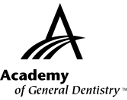|
Exercise No. 354
Subject Code: 013
Microbiology
The 15 questions for this exercise are based on the article, “Current applications of nanotechnology in dentistry: a review”, on pages 72-77. This exercise was developed by Anthony S. Carroccia, DDS, MAGD, ABGD, in association with the General Dentistry Self-Instruction committee.
|
Reading the article and completing the exercise will enable the reader to:
- understand current concepts of nanotechnology;
- recognize the uses of nanotechnology in dentistry; and
- identify the applications of projected uses of nanotechnology.
|

